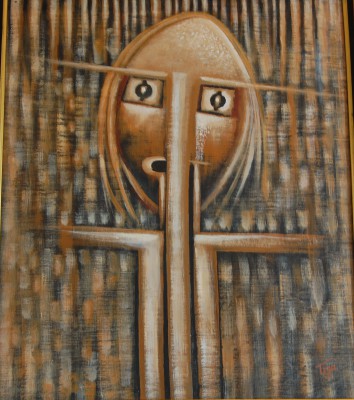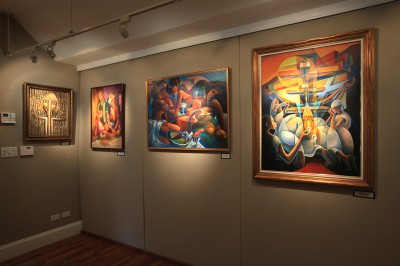Haitian Works from The D'Aguilar Collection
01/12/2011-02/01/2011
Brief History of Art in Haiti
1816 French Artist Barincourt founded an art school in Port au
Prince.
1830-1860 – About 30 Haitian artists, some trained in France, were
at work in Port au Prince and Cap Haitien
1850 – Emperor Soulouqe founded the Imperial Academy of Drawing and
Painting in Port au Prince. This closed
after 9 years.
1863 to 1930, various other small private art schools open,
encouraging painting, drawing and sculpture within a very small segment of the
population.
1943, An American, DeWitt Peters, comes to Haiti to teach English
in a program sponsored by the United States Embassy.
After teaching for a period and
travelling throughout Haiti,
He noted “there was no
(organized) art (programs) in Haiti, and this seemed extraordinary in a country
of very great natural beauty, with a clarity of atmosphere comparable to that
of southern Italy, inhabited by a charming people rich in folklore and
tradition.”
He made contact with the
President of Haiti at the time, Elie Lescot, and with Lescot’s blessing, he
received permission in
1945 to convert
a grand abandoned house into the Centre d’Art.
This centre was used to hold art classes, exhibitions, and became a
meeting spot for many new artists. The
Centre was funded equally by the Haitian Govt. and US Department of State, and
it gave birth to an entirely new generation of Haitian artists. 10 of the artists who were early members of
the Centre are in our collection:
Wilson Bigaud, Prefete Dufaut, Georges Liautaud, Gerard Valcin, Bourmond
Byron, Saincilus Ismael, Robert St. Brice, Seymour Bottex, Alexandre Gregoire, and
Luckner Lazard, and you can see that their work is what we call naïve or
primitive, with limited perspective. The success of the Centre d’art
and the international discovery of Haitian art fosters a “dazzling explosion of
works so deeply distinctive, so willfully diverse that the accumulated
creations are like a vast treasure trove.”
Various “schools” of art arise in many parts of Haiti, and it seems that
in a few short years a whole nation is painting and creating.
Some of the other dominant art
centres include:
Saint Soleil, founded by Tiga Garoute in 1974, where he was later
joined by Levoy Exil and Prospere Pierre Louis.
Several of the artists in this group show the influence of Voodoo in
their work.
The “Voodoo” artists, led by the master Hector Hypolite, who paints
for only three years after being discovered by Dewitt Peters.
Andre Pierre is esteemed to
be the spiritual heir to Hector Hypolite.
Some of the more successful
artists later go to France to study, including Luckner Lazard and Roland Dorcely, where they gain exposure to
new techniques and styles that they share with their countrymen upon their
return to Haiti, reflected in their work.
Work of more contemporary artists
such as Favrange Valcin, Valcin II, reflects formal art training at the
Brooklyn Museum School of art.


